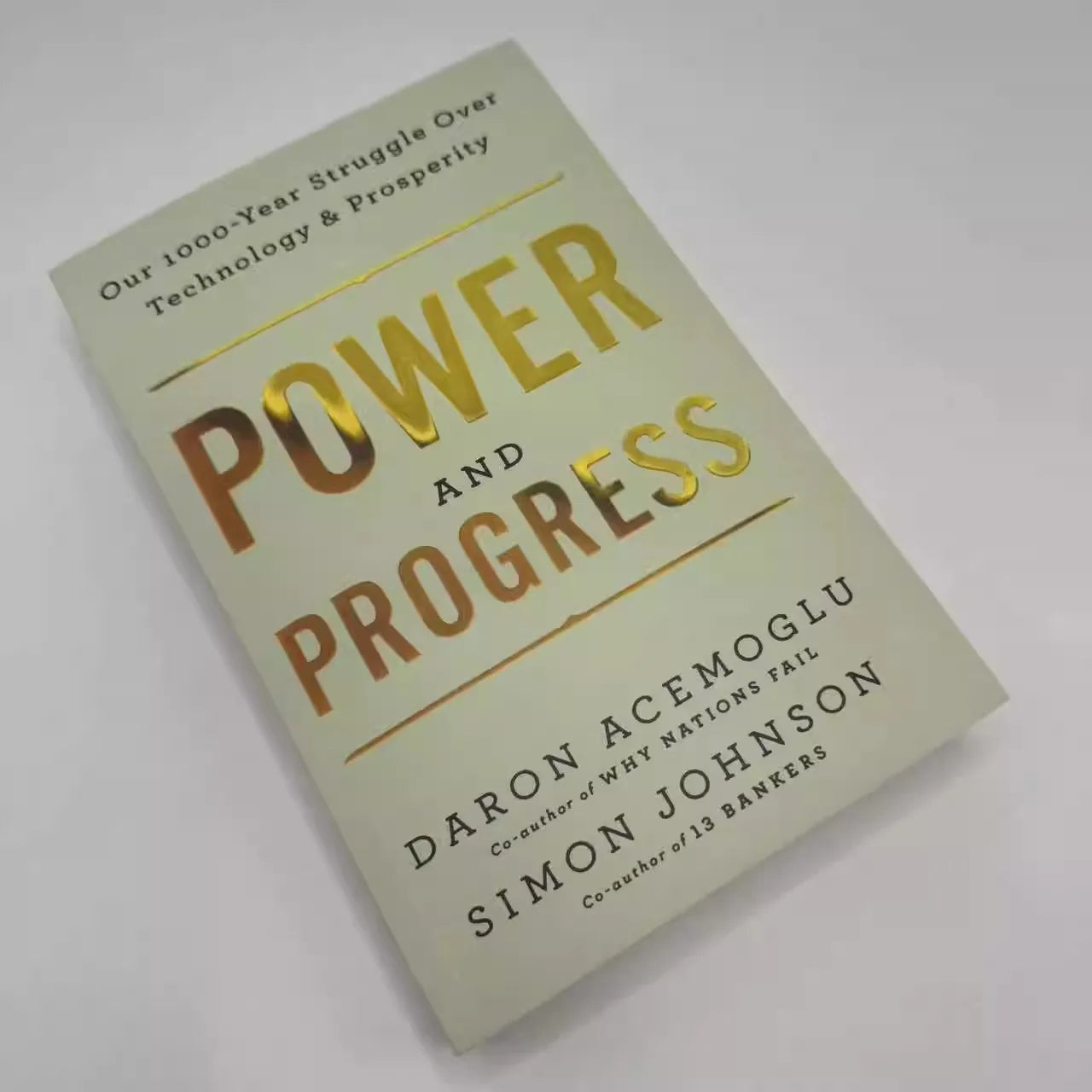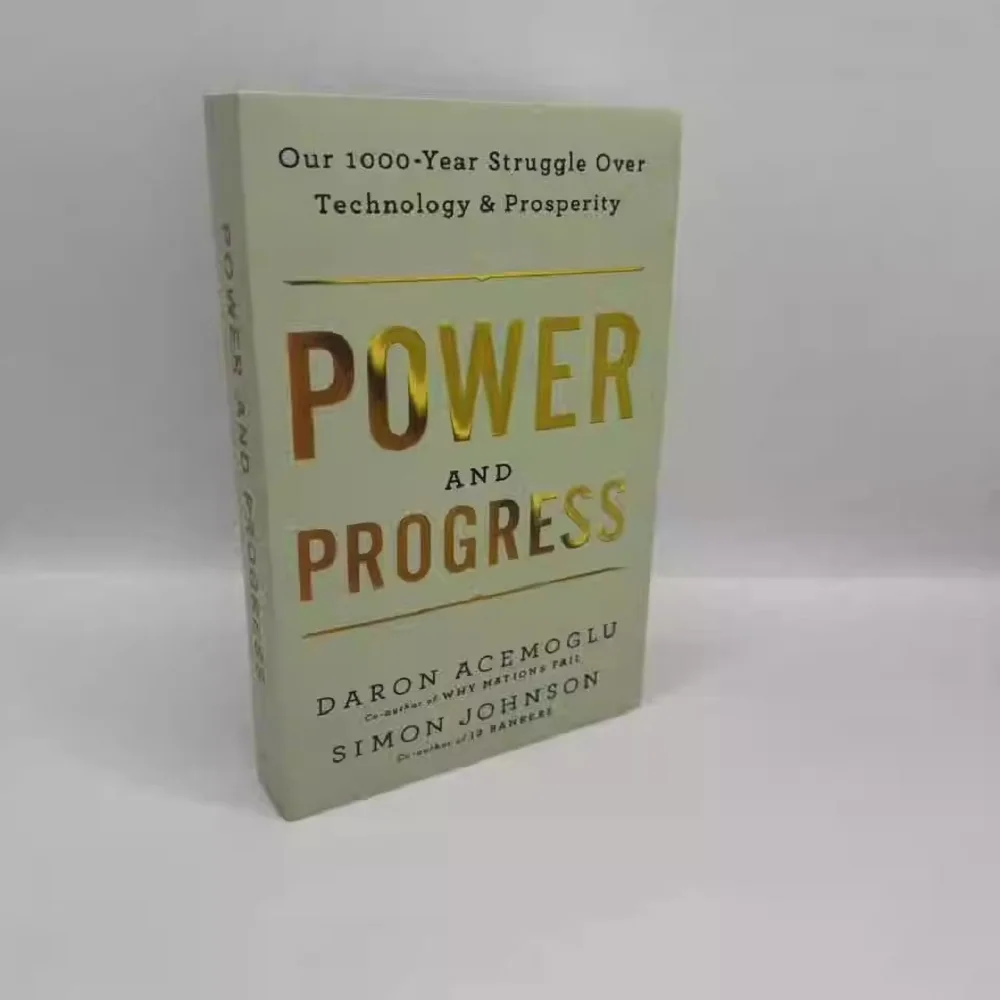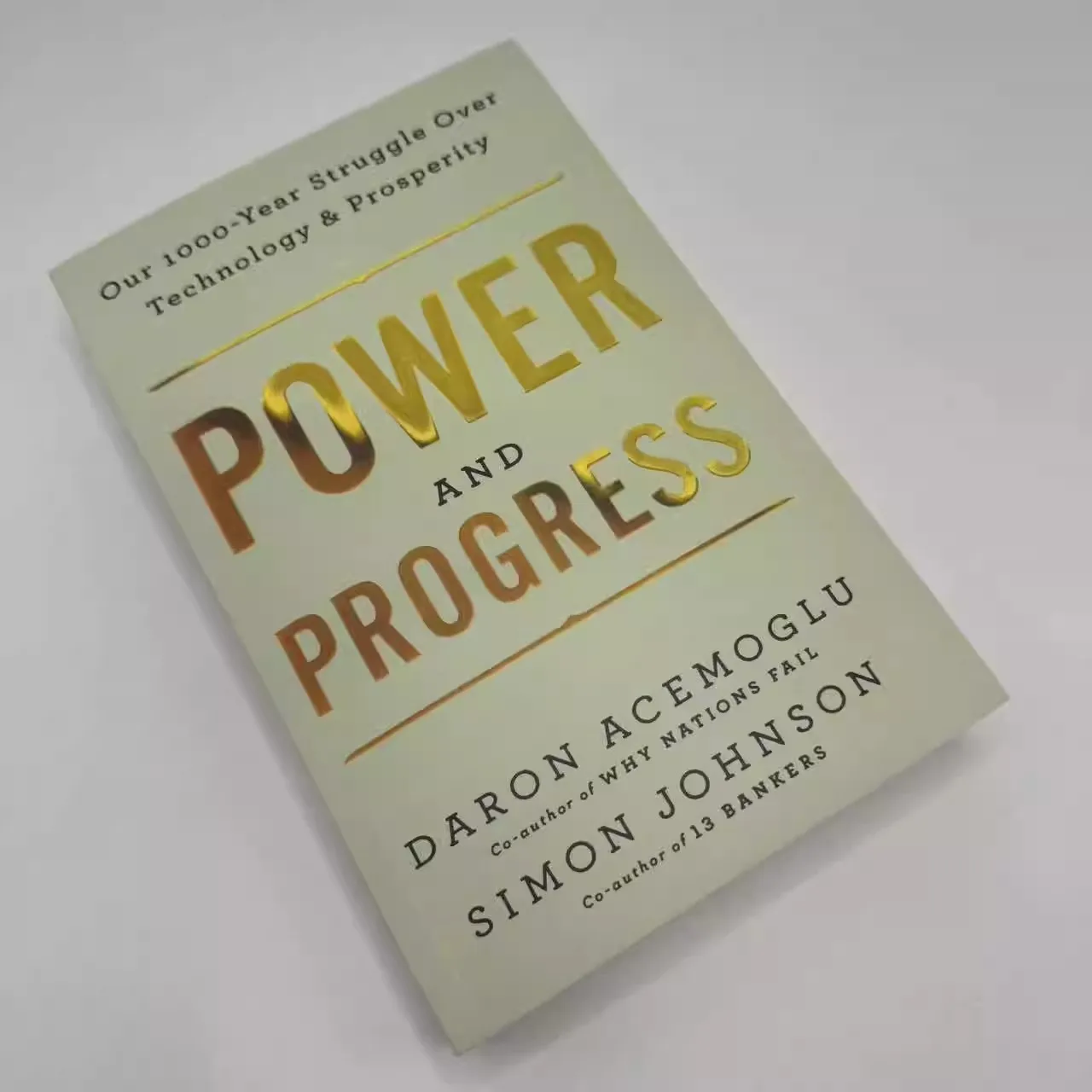
SPECIFICATIONS
Age: Adult
Brand Name: NoEnName_Null
Choice: yes
Condition: New
Hign-concerned Chemical: None
Language: English
Origin: Mainland China
semi_Choice: yes
This book is the latest masterpiece by renowned economists Daron Asimoglu and Simon Johnson at the Massachusetts Institute of Technology (MIT). Their previously co authored book 'Why States Fail' has become a classic in the field of political economy. This new work shifts the focus to the millennium game between technology, social power, and wealth distribution.
1. Core argument and main idea
Title: Power and Progress: Our Thousand Year Struggle Over Technology and Prosperity
Chinese translation: "Power and Progress: A Millennium History of Our Technological Struggle"
Core argument: Technological progress itself does not automatically bring about social prosperity and progress shared by all. The distribution of technological achievements depends entirely on the social power structure.
Critique of 'technological optimism': This book directly points to the current mainstream view that new technologies such as AI will inevitably benefit everyone, just like steam engines or electricity in history. The author believes that this is a dangerous illusion.
Power determines direction: The path of technological development and the distribution of benefits are not determined by technology itself, but by the power game between the elites who control technology (those in power, large corporations, wealthy individuals) and other groups in society.
Wrong turning point: If technology is only used by elites to achieve automation, monitoring, and social control (referred to by the author as "so so technologies" - "mediocre technology"), it will only exacerbate inequality rather than create widespread prosperity. There are too many examples like this in history.
Call for 'reorientation': We are at a crossroads of the AI revolution. We must consciously compete for the direction of technological development, ensuring that it is used to enhance human capabilities, create new tasks and jobs, improve productivity, and benefit the majority, rather than just serving the interests of a few.
2. Key content and historical cases
The author uses a large number of historical cases to support their argument, proving that the benefits of technology never automatically drip down:
The medieval agricultural revolution introduced major technological innovations such as heavy plows and crop rotation. However, the significant increase in productivity was mainly seized by feudal lords through raising land rent and labor, and the living standards of farmers remained almost unchanged for centuries. Technological progress, but life remains difficult.
In the early stages of the Industrial Revolution, textile mechanization (such as the Jenny spinning machine) greatly improved efficiency, but the main result in the early days was that factory owners gained huge profits, while workers faced long, low wage and harsh working conditions, leading to widespread poverty and social unrest (Ludendorff Movement). Technological progress, but the wealth gap is rapidly widening.
The 'Great Turning Point' of the mid-20th century: From the late 19th century to the 1970s, technological progress finally brought about shared prosperity. But this is not automatically brought about by technology, but rather the result of social and political struggles such as the rise of union power, progressive policies, government regulation, corporate governance reform, and highly progressive taxation. These forces balance the rights of capital and force the benefits of technology to be shared more widely.
These histories indicate that our current era is more like the early stages of the Industrial Revolution - a technological leap, but a power imbalance that resulted in the results being heavily absorbed by the top.
3. Analysis and Warning of the Current AI Era
The ultimate focus of this book is the current new technological revolution driven by artificial intelligence and big data.
The current dangerous path: The author warns that the development of AI is being led down a dangerous path by large technology companies and capital forces:
Direction 1: Automation and Replacement: Mainly focusing on replacing human workers with machines (such as customer service, driving, copywriting, etc.) to save labor costs, which will lead to large-scale unemployment and inequality.
Direction 2: Monitoring and Control: Developing social rating systems and precise behavior manipulation tools (such as social media algorithms), which enhance the elite's control over society and individuals.
The 'mediocre technology': Although these technologies are advanced, they may be 'mediocre' or even harmful from the perspective of overall social welfare, as they do not create new and better forms of human activity, but simply replace or control them.
4. Solution and Vision for 'Rebounding' Technology
The author is not an anti technologist. They put forward a positive vision: how to guide technology, especially AI, onto the path of benefiting society.
Goal: To shift the development direction of AI from "replacing humans" to "enhancing humans" - creating new tools and tasks, working hand in hand with humans, and improving human productivity and creativity.
Implementation path: This requires a new social and political movement to change the balance of power, including:
Reform regulation: Conduct anti-monopoly supervision on technology giants and standardize data usage.
Taxation and subsidies: Taxation on technologies that only replace labor, while subsidizing technology research and development that enhances human capabilities.
Labor rights: Support workers' organizations and ensure that they have a voice in technological change.
Civil society: The public needs to be aware of their right to choose technological directions and actively participate in them.
Who is this book suitable for?
Anyone interested in technology and social issues, especially those who are concerned about how AI will affect future social structures.
Policy makers, scholars, and entrepreneurs provide a profound framework and historical perspective for examining the impact of technology.
Investors and professionals: help understand the macro trends of technological change and its potential impact on industries and employment.
For ordinary readers who hope to understand the fate of the times, this provides a powerful analytical tool that goes beyond the hype of technology news and delves into the essence of problems.
In summary, 'Power and Progress' is an ambitious, historically detailed, and highly relevant work. It breaks the myth that 'technology necessarily equals progress' and strongly argues that the future of technology is not predetermined, but a political choice. Our struggle today will determine whether the AI era is a prosperous era that benefits the majority, or a bleak era with highly centralized power and increasing inequality. This book is an important and timely intervention in the current technological debate.










